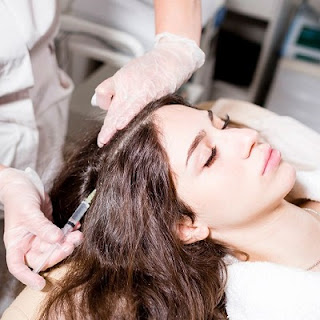The Effectiveness of PRP Hair Treatment in Severe Hair Loss Cases
Introduction
Hair loss is a common concern affecting millions of people worldwide, with severe cases often leading to significant psychological and emotional distress. Amidst a plethora of treatments available, Platelet-Rich Plasma (PRP) therapy has emerged as a promising option for addressing severe hair loss. Best PRP Hair Treatment in Oman harnesses the body's own natural healing mechanisms to stimulate hair growth, making it a minimally invasive alternative to more traditional treatments like hair transplants. This article delves into the effectiveness of PRP hair treatment, exploring its mechanisms, benefits, limitations, and current evidence supporting its use in severe hair loss cases.
Understanding PRP Hair Treatment
What is PRP Therapy?
Platelet-Rich Plasma (PRP) therapy involves drawing a small amount of blood from the patient, processing it to concentrate the platelets, and then injecting this concentration into the scalp. Platelets are known for their role in healing and tissue regeneration, and when introduced to the scalp, they are believed to stimulate dormant hair follicles and enhance hair growth.
How PRP Therapy Works
The process begins with blood collection, which is then centrifuged to separate the PRP from other components. The resulting PRP is rich in growth factors and proteins that promote cell repair and regeneration. When injected into the scalp, PRP is thought to increase blood supply to the hair follicles, boost the production of essential growth factors, and prolong the anagen (growth) phase of the hair cycle.
Effectiveness of PRP Therapy in Severe Hair Loss Cases
Clinical Evidence and Research Findings
Recent studies have shown promising results for PRP therapy in treating severe hair loss conditions, particularly androgenetic alopecia (male and female pattern baldness). Clinical trials and research have demonstrated that PRP can lead to significant improvements in hair density, thickness, and overall growth. For instance, a study published in the Journal of Cutaneous and Aesthetic Surgery found that PRP therapy resulted in a notable increase in hair count and thickness in patients with severe androgenetic alopecia.
Comparative Effectiveness
Compared to other treatments like oral medications and topical solutions, PRP therapy offers distinct advantages. Unlike medications that may have systemic side effects, PRP therapy is minimally invasive and uses the patient's own blood, reducing the risk of adverse reactions. While hair transplants provide a more permanent solution, PRP therapy can be a less invasive adjunct or alternative for individuals who may not be suitable candidates for surgery.
Patient Outcomes and Satisfaction
Many patients report high levels of satisfaction with PRP therapy, noting visible improvements in hair density and quality. The treatment typically requires multiple sessions spaced several weeks apart, and maintenance treatments may be necessary to sustain results. While not everyone achieves dramatic results, many find PRP therapy to be a worthwhile investment in their appearance and self-esteem.
Limitations and Considerations
Variability in Results
One of the challenges with PRP therapy is the variability in patient outcomes. Factors such as the severity of hair loss, the cause of hair loss, and individual response to treatment can influence results. Some patients may experience significant hair regrowth, while others may see only modest improvements. It is essential for patients to have realistic expectations and to understand that PRP therapy may not be a cure-all.
Cost and Accessibility
PRP therapy can be expensive, and because it is often considered a cosmetic procedure, it may not be covered by insurance. Additionally, the effectiveness of PRP therapy can depend on the expertise of the practitioner, which underscores the importance of seeking treatment from a qualified and experienced professional.
Long-Term Efficacy
While short-term results are generally positive, long-term efficacy remains a topic of ongoing research. Some studies suggest that the benefits of PRP therapy may diminish over time, necessitating regular maintenance treatments to sustain hair growth.
Conclusion
Platelet-Rich Plasma (PRP) therapy represents a compelling option for individuals struggling with severe hair loss. By utilizing the body's natural healing processes, PRP offers a minimally invasive alternative to traditional treatments, with a growing body of evidence supporting its effectiveness. However, variability in results, cost considerations, and the need for ongoing maintenance highlight the importance of a well-informed approach to treatment.
As research continues to evolve, PRP therapy may become an even more refined and accessible solution for those seeking to restore their hair and confidence. For individuals experiencing severe hair loss, consulting with a qualified specialist can provide personalized insights into the potential benefits and limitations of PRP therapy in their specific case.




Comments
Post a Comment